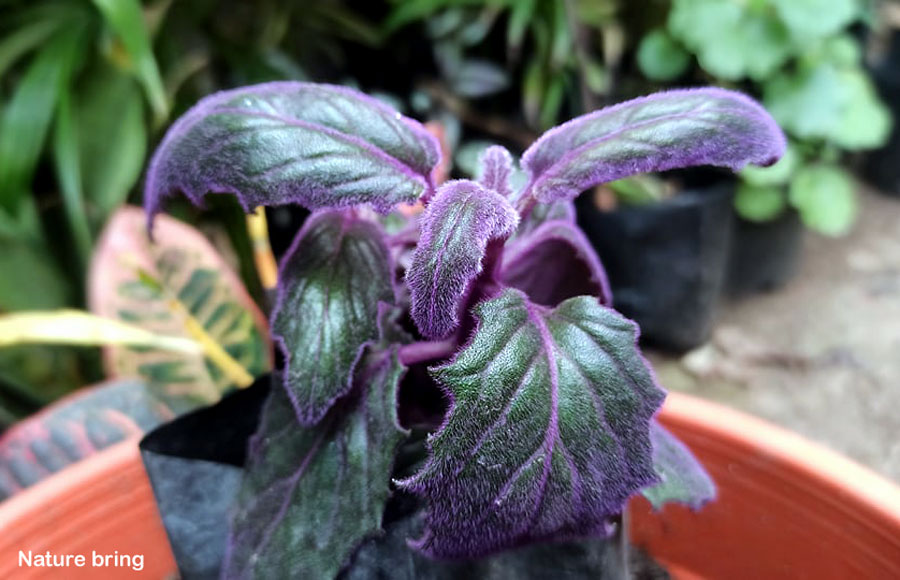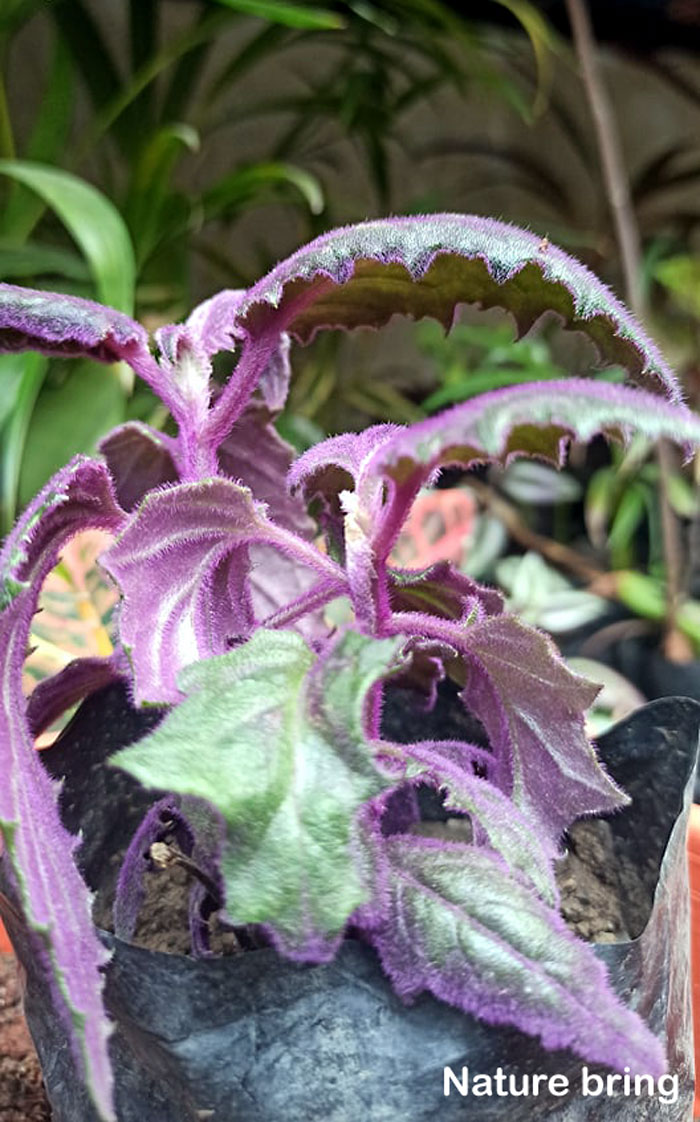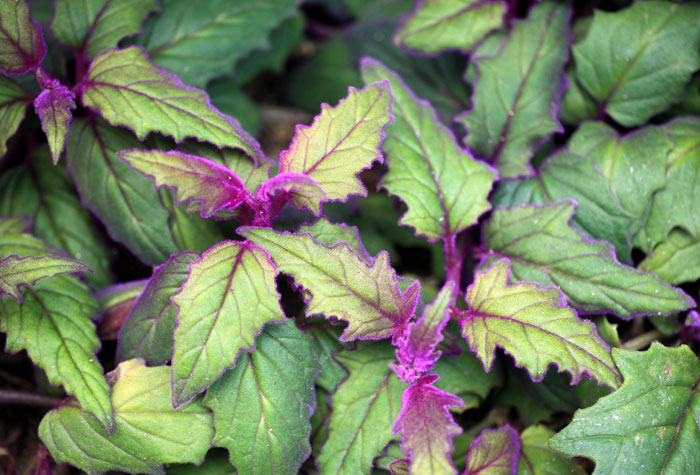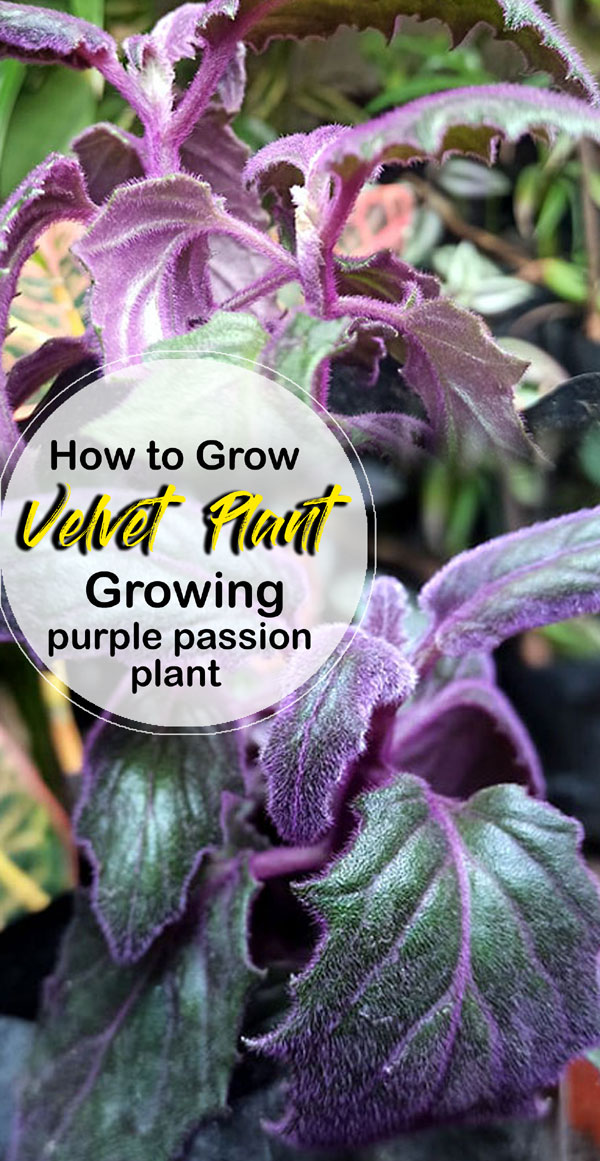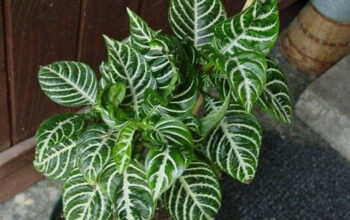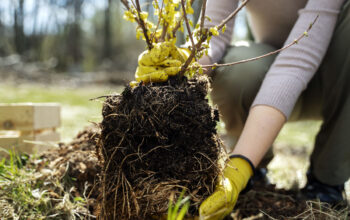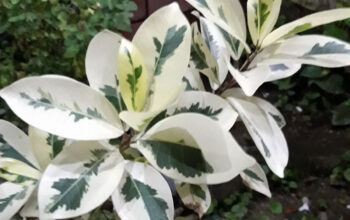Velvet Plant (Gynura aurantiaca)
Known as the purple passion plant or Gynura aurantiaca, the purple velvet plant has purple, furry leaves with a purple-green color. Passion houseplant belongs to the Asteraceae of the daisy family. Originally from Southeast Asia, it is now grown all over the world as a house plant. Rather than being grown indoors, it is frequently grown outdoors on patios and gardens in warm climates. Consequently, it has escaped into the wild in Africa, Australia, South America, Mesoamerica, Florida, and other places.
An evergreen perennial, the velvet plant can grow up to 30 cm tall. Its stems may grow straight up but can also grow reclining against an object, reaching a height of 2 meters. Dark green leaves, stems, and bracts are covered with soft purple hairs that give the plant a velvety texture. It produces 1-5 flower stalks, each with its own flower head. They have quite a strong smell. There are several disc flowers with yellow, orange, or red petals but no ray flowers.
Classification purple passion plant
Scientific Name Gynura aurantiaca
Common Name Purple passion plant, purple passion vine, velvet plant
Plant Type Houseplant
Sun Requirements indirect and bright
Soil well-drained potting mix
Soil pH 5.5- 6.5
Blooming time Winter
Zone 10-12
How to Grow purple passion plant and care
It is a great addition to a home if you’d like a little color to break up all of the green since its purple-tinged leaves are very eye-catching.
Growing from seeds
You can start and grow velvet plants at any time in your house. Upon maturation, they can grow into a bushy miniature plant that measures up to 6 inches long with flowers up to 3 inches long.
Growing from cuttings
Cuttings of the velvet plant are easy to propagate, making it easy to maintain a constant supply if desired. To propagate the plant, cut the stem into a three-inch-long cutting that contains several leaf nodes. It usually takes three to five days for a cut end to scab over. As soon as the cut end is dry, add rooting hormone to the cut and place the cut end scab-side down into a container of potting soil, covering the top with plastic wrap to keep it warm and moist. After the seed germinates, it can be removed from the covering so the young plant’s leaves can dry out.
Sunlight
Bright light makes the leaf color richer and deeper, and too much light can completely obliterate the plant’s purple hue. Despite liking bright light, velvet plants do not like direct sunlight during the afternoon. They do best in front of a window with lots of suns, but some shade is ideal.
Watering
Incredibly fragile, the roots of purple velvet plants can easily rot. As a result, the soil should never be kept excessively wet. Water your velvet plant immediately if it begins to droop, so it will quickly recover. Water your velvet plant less in the fall and winter.
Soil
Purple passion plants ought to be planted in soil that has good drainage because too much water can cause root rot. You can root cuttings more easily by mixing perlite with vermiculite. Adding some rocks or gravel to the bottom will help the water drain properly.
Temperature and Humidity
Purple passion plants ought to be planted in soil that has good drainage because too much water can cause root rot. You can root cuttings more easily by mixing perlite with vermiculite. Adding some rocks or gravel to the bottom will help the water drain properly.
The ideal humidity level is between 40% and 60%.In order to ensure that your Purple Passion plant has enough humidity; you can place it near a humidifier or simply mist its leaves on a regular basis.
Fertilizer
Use a weak liquid fertilizer every week or two weeks on your velvet plant. Using a fertilizer formulated specifically for houseplants will keep the purple velvet plant flourishing in a container. Throughout the growing season, it is best to administer a half-strength dose of the product every week or two. Feed it once a month during the winter to allow it to rest.
Pruning
With adequate water and fertilizer, purple velvet plants can grow leggy, so pruning is recommended to keep them bushy and encourage robust growth near the soil. Any damaged limbs or branches that have grown more than 3 feet in height should be pruned out. Keep the outline of the plant low and bushy.
Read also:
How to grow organic Sage in containers.
For pin:

